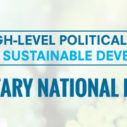
Search
The Threat Posed by COVID-19 to People Living in Poverty

Governments and the development community are attempting to respond to the evolving threat of the COVID-19 pandemic. The impact on multidimensional poverty levels around the world is likely to be severe, with the poorest hit hardest.
COVID-19 has the potential to drag people just above the poverty threshold into poverty due to its effect on the global economy, with many countries halting production and shutting down whole sectors of their economies. The virus is providing another sobering example of the stark inequalities in society – both in monetary and multidimensional terms – and exacerbating those inequalities at a speed that few could have predicted.
When the health systems of OECD countries struggle to cope, the situation looks bleak for low- and middle-income countries. Poor performance in common indicators of multidimensional poverty indices such as overcrowding, drinking water, and nutrition directly endanger the health of many communities, leaving them potentially more vulnerable when ex- posed to infection. In addition, lack of internet access or education may impede efforts to connect people with life-saving information.
Although research remains ongoing, the groups most susceptible to the worst outcomes of COVID-19 appear to be older people and those with underlying health conditions. According to data from the 2019 global Multidimensional Poverty Index (gMPI), there are almost 109 million people aged 60 years or over who are multidimensionally poor, making up over 8% of all people living in multidimensional poverty around the world. In sub-Saharan Africa, this figure is 5.7%, while in Latin America and the Caribbean it is 11.5%.
Other vulnerabilities relate to deprivations in water, which can weaken immune systems and hamper hygiene, and in cooking fuel, which can increase the chances of respiratory disease among households. In sub-Saharan Africa, on average, 44.6% of people live in a household with no access to clean drinking water (in South Asia it’s 14.0%, in East Asia and the Pacific it is 20%, and it is 21.7% in the Arab States). These vulnerabilities are explored in more detail in the following article.
As the pandemic unfolds, the multidimensional poverty community is invited to share ideas with the MPPN.
The outbreak has negative ramifications for many aspects of everyday life, from the loss of employment to the loss of staffing for basic services and the suspension of education for children. There are already many poor children who are unable to attend school and are therefore deprived of basic education, which can have adverse effects on their chances of moving out of poverty. With widespread school closures, additional children will be kept at home for an extended period. And while many developed countries resolve this problem by shifting to online education for school- age children and home schooling for younger children, this is not a feasible course of action in all countries. Online education requires a stable internet connection and the availability of a technological devices such as a computer or a smartphone for each child, while home schooling relies on parents’ academic abilities. How- ever, across the 101 global MPI countries, almost 15% of people live in a household where no one aged 10 or above has completed at least six years of schooling, while over 17% of people live in households with no electricity.
How the MPI can help
As a measurement tool, the MPI enables us to identify locations with large vulnerable populations and helps us track the long-term effects of the outbreak on poverty around the world. More than ever, a multidimensional perspective on poverty reduction will be needed to showcase the effects of the economic downturn across the many overlapping dimensions of people’s lives.
The community focused on multidimensional poverty reduction includes actors who range from academics and government officials to people in the private sector and non-profit or international organizations – with expertise spanning measurement, statistical analysis, policy and evaluation. The diverse skills and knowledge of this community can help guide governments through this crisis. By building on an understanding of multidimensional poverty and how to track it, policymakers can deliver swift, integrated, and targeted responses that focus on the interlinkages between poverty and the ongoing global epidemic. For example:
Adding COVID-19 vulnerability indicators into a Multidimensional Vulnerability Index so that it includes MPI-poor persons and other vulnerable persons.
- Identifying subpopulations who might be particularly vulnerable to the disease or households who might be adversely affected by the physical distancing measures.
- Integrating COVID-19 emergency responses with MPIs based on registry data in order to rapidly identify and target persons likely to be affected by the COVID-19 crisis and its economic repercussions.
- Extending current targeting formulae to develop a Multidimensional Targeting Index that includes the ‘new poor’ in order to enrol them in new social programmes.
Time to connect
As the pandemic unfolds, the multidimensional poverty community is invited to share ideas with the MPPN.
Please email ophi@qeh.ox.ac.uk with the subject heading ‘COVID-19’. Tell us what you are doing or what you would you like to do, but cannot do. Together we can use data, research, and motivated innovation to tackle this latest development in global poverty.
This article was published in Dimensions 9
















